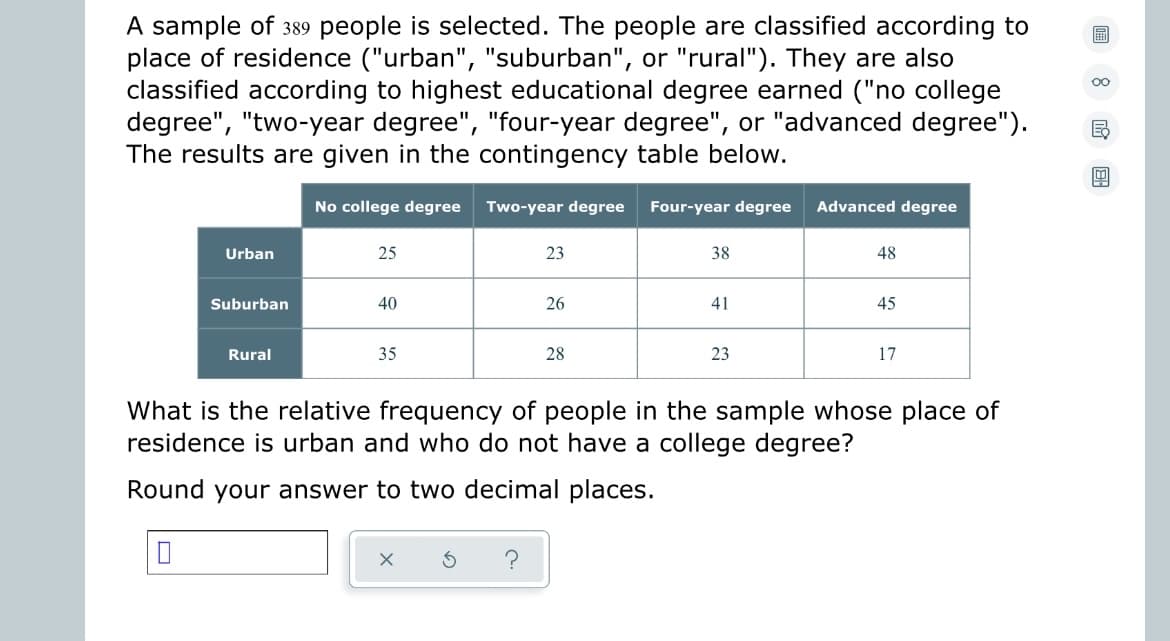A sample of 389 people is selected. The people are classified according to place of residence ("urban", "suburban", or "rural"). They are also classified according to highest educational degree earned ("no college degree", "two-year degree", "four-year degree", or "advanced degree"). The results are given in the contingency table below. No college degree Two-year degree Four-year degree Advanced degree Urban 25 23 38 48 Suburban 40 26 41 45 Rural 35 28 23 17 What is the relative frequency of people in the sample whose place of residence is urban and who do not have a college degree?
A sample of 389 people is selected. The people are classified according to place of residence ("urban", "suburban", or "rural"). They are also classified according to highest educational degree earned ("no college degree", "two-year degree", "four-year degree", or "advanced degree"). The results are given in the contingency table below. No college degree Two-year degree Four-year degree Advanced degree Urban 25 23 38 48 Suburban 40 26 41 45 Rural 35 28 23 17 What is the relative frequency of people in the sample whose place of residence is urban and who do not have a college degree?
A First Course in Probability (10th Edition)
10th Edition
ISBN:9780134753119
Author:Sheldon Ross
Publisher:Sheldon Ross
Chapter1: Combinatorial Analysis
Section: Chapter Questions
Problem 1.1P: a. How many different 7-place license plates are possible if the first 2 places are for letters and...
Related questions
Question

Transcribed Image Text:A sample of 389 people is selected. The people are classified according to
place of residence ("urban", "suburban", or "rural"). They are also
classified according to highest educational degree earned ("no college
degree", "two-year degree", "four-year degree", or "advanced degree").
The results are given in the contingency table below.
E
4
No college degree Two-year degree
Four-year degree Advanced degree
Urban
25
23
38
48
Suburban
40
26
41
45
Rural
35
28
23
17
What is the relative frequency of people in the sample whose place of
residence is urban and who do not have a college degree?
Round your answer to two decimal places.
0
?
Expert Solution
This question has been solved!
Explore an expertly crafted, step-by-step solution for a thorough understanding of key concepts.
This is a popular solution!
Trending now
This is a popular solution!
Step by step
Solved in 2 steps

Recommended textbooks for you

A First Course in Probability (10th Edition)
Probability
ISBN:
9780134753119
Author:
Sheldon Ross
Publisher:
PEARSON


A First Course in Probability (10th Edition)
Probability
ISBN:
9780134753119
Author:
Sheldon Ross
Publisher:
PEARSON
